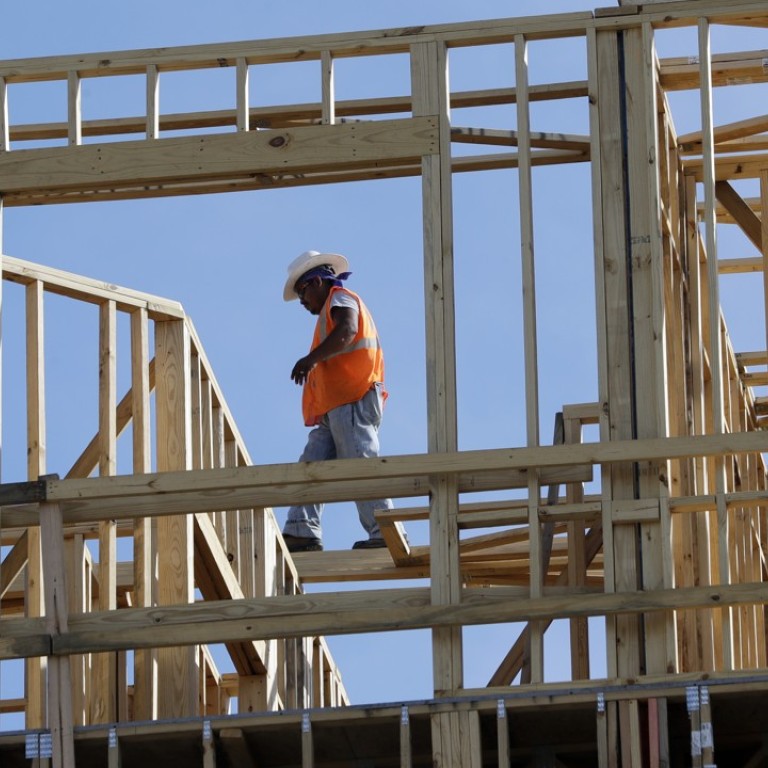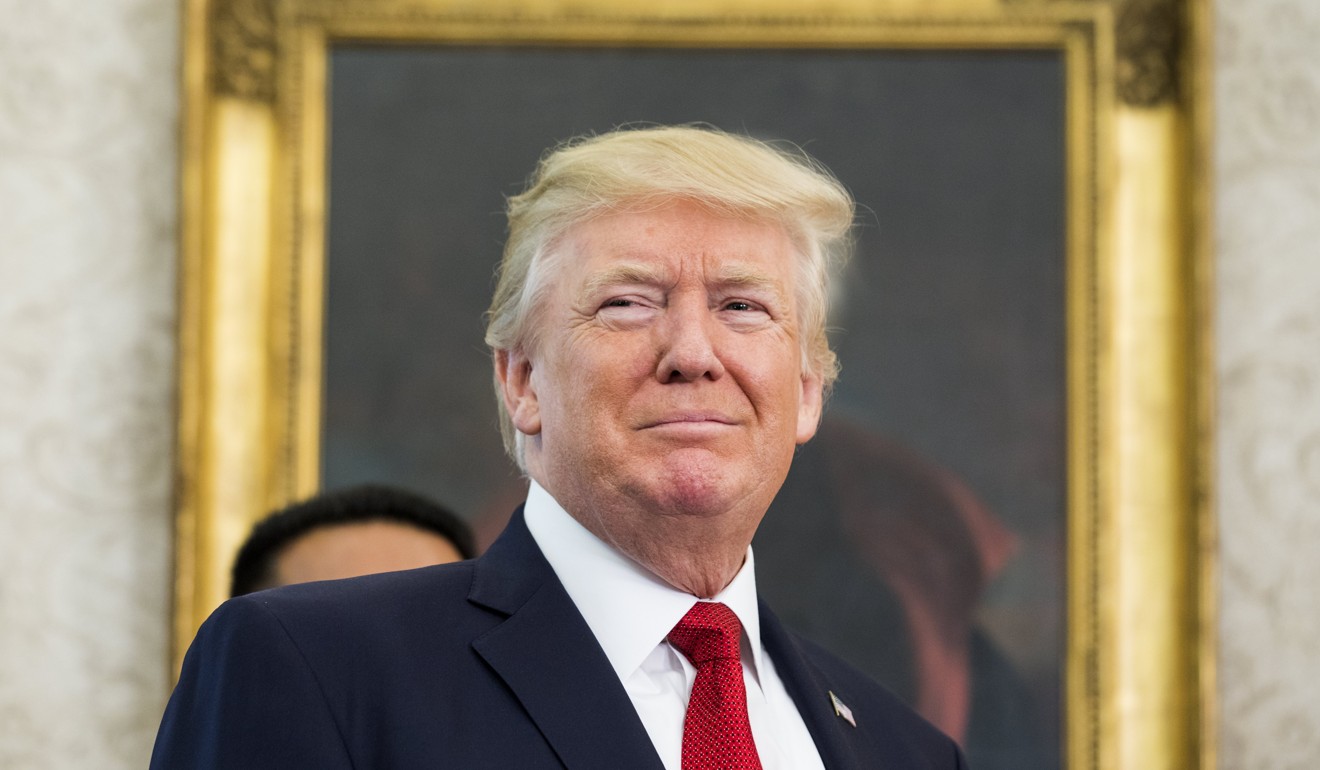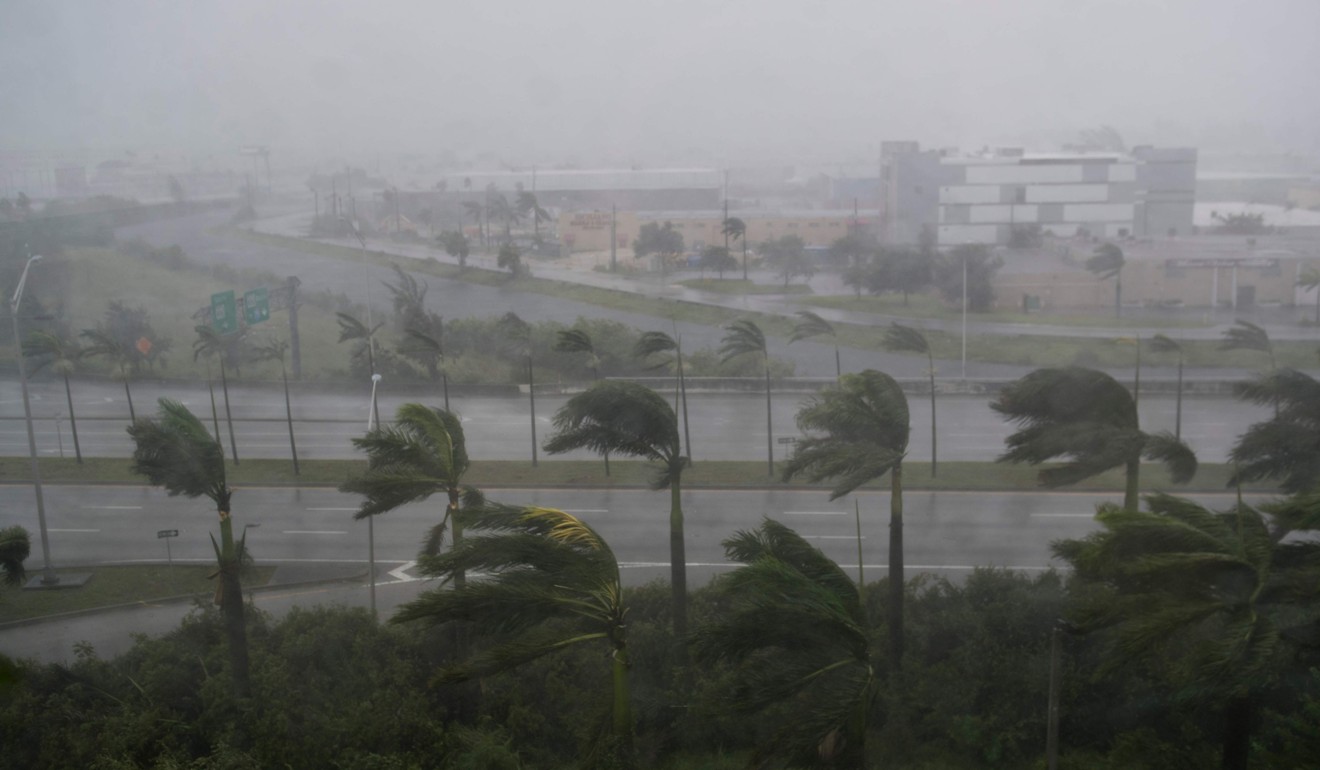
US economy expands 3 per cent in third quarter to buck effect of severe hurricanes
The US economy expanded at a 3 per cent annualised rate between July and September, advancing President Trump’s goal of faster economic growth and potentially providing a tailwind to Republican efforts to overhaul the tax code.
The robust pace of economic growth defied analysts’ expectations that activity might slow in the third quarter because of Hurricane Harvey. The economy also grew at 3 per cent in the spring, the Bureau of Economic Analysis reported on Friday.
Combined with a strong labour market and record highs in the stock market – the Standard&Poor’s 500 index is up nearly 15 per cent year to date – the economy is proving to be an ally of a president who is otherwise suffering from unusually low approval numbers and political conflicts.

Trump and his allies in Congress are making the case that passing a tax overhaul – which aim to cut income and corporate taxes by US$1.5 trillion over a decade – is critical to continuing the economic expansion. House Republicans plan to unveil a bill on Wednesday on the tax code and both chambers plan to pass one by Thanksgiving, an extremely tight deadline for a major piece of legislation.
“Working with President Trump and the Senate, we will deliver on our tax reform promise this year – ushering in a new era of growth for the American people,” House Ways and Means Committee Chairman Kevin Brady said in a statement on Friday.
Yet the resiliency of the economy also underscores the high-stakes of the effort and what any slowdown in growth, or decline in the stock market, might mean for the president and Republicans politically.
Few economists expect the economy to continue to expand at 3 per cent growth in coming quarters, given the waves of baby boomers retiring and exiting the workforce. Under President Obama, the economy grew an average of 2.1 per cent a year, although he also had many quarters where growth exceeded 3 per cent.
On the campaign trail, Trump repeatedly promised growth of over 4 per cent, which hasn’t happened consistently since the late 1990s.
“An above-trend quarter does not mean that the trend has picked up,” says Jim O’Sullivan, chief US economist at High Frequency Economics.
And some – including in the White House – argue that the stock market and businesses might already be pricing in a substantial tax cut, meaning failure to deliver could lead to a pullback in performance.
“Firms are optimistic because of regulatory reform but also because they expect corporate tax reform,” Kevin Hassett, chair of Trump’s Council of Economic Advisers, said on a call Friday with reporters. “The thing I’m worried about is if those expectations prove to be incorrect, I would expect business fixed investment to go back to its disappointing past and markets to go down as well.”
Growth in the third quarter was driven by Americans continuing to spend money on a wide range of products and businesses starting to open their wallets more to purchase new equipment and build up their inventories. Higher federal government spending also helped boost growth.
“The economy continues to grow above potential. This is what will lead to further improvements in labour markets and, over time, firmer wage growth and inflation,” says Pooja Sriram, an economic analyst at Barclays bank.

The United States is on track for a history-making expansion. If the current growth cycle lasts until May 2018, as most economists predict, it will be the second longest expansion in US history, according to Lakshman Achuthan, co-founder of the Economic Cycle Research Institute. If it lasts until July 2019, it would surpass the 1991-2001 expansion as the longest.
“So some people may think we are in the seventh or eighth inning of this expansion, but in the business cycle game, there is no fundamental reason an economic expansion cannot last for 20 innings or longer,” says Achuthan.
There’s a heated debate among economists over how much Trump’s tax plan, which is being finalised now, will bump up growth. The Trump administration says tax cuts will cause a large uptick, so much so that the economy will grow more than 3 per cent a year, which hasn’t happened since 2005.
Goldman Sachs forecasts only a modest 0.1 to 0.2 percentage point increase in economic growth if Congress passes the tax reform bill. The Wall Street bank also cautions that growth depends not just on what Congress and the White House do, but also the Federal Reserve.

After years of stimulative low interest rates, the Fed is beginning to lift rates, which is akin to tapping the brakes on the economy.
“This tailwind is unlikely to persist as the Fed continues to tighten,” Goldman warned in its weekly kick-start newsletter this week.
Trump is about to select the next Fed chair, the most powerful economic policy position in the United States. He is currently debating between reappointing current chair Janet Yellen, an advocate of low rates to help growth and jobs, or nominating someone like Stanford economist John Taylor, who favours raising interest rates faster.
The leading candidates for the job are Yellen, Taylor and Jerome Powell, who is currently a Fed governor and seen as someone likely to continue many of Yellen’s low-rate policies.

